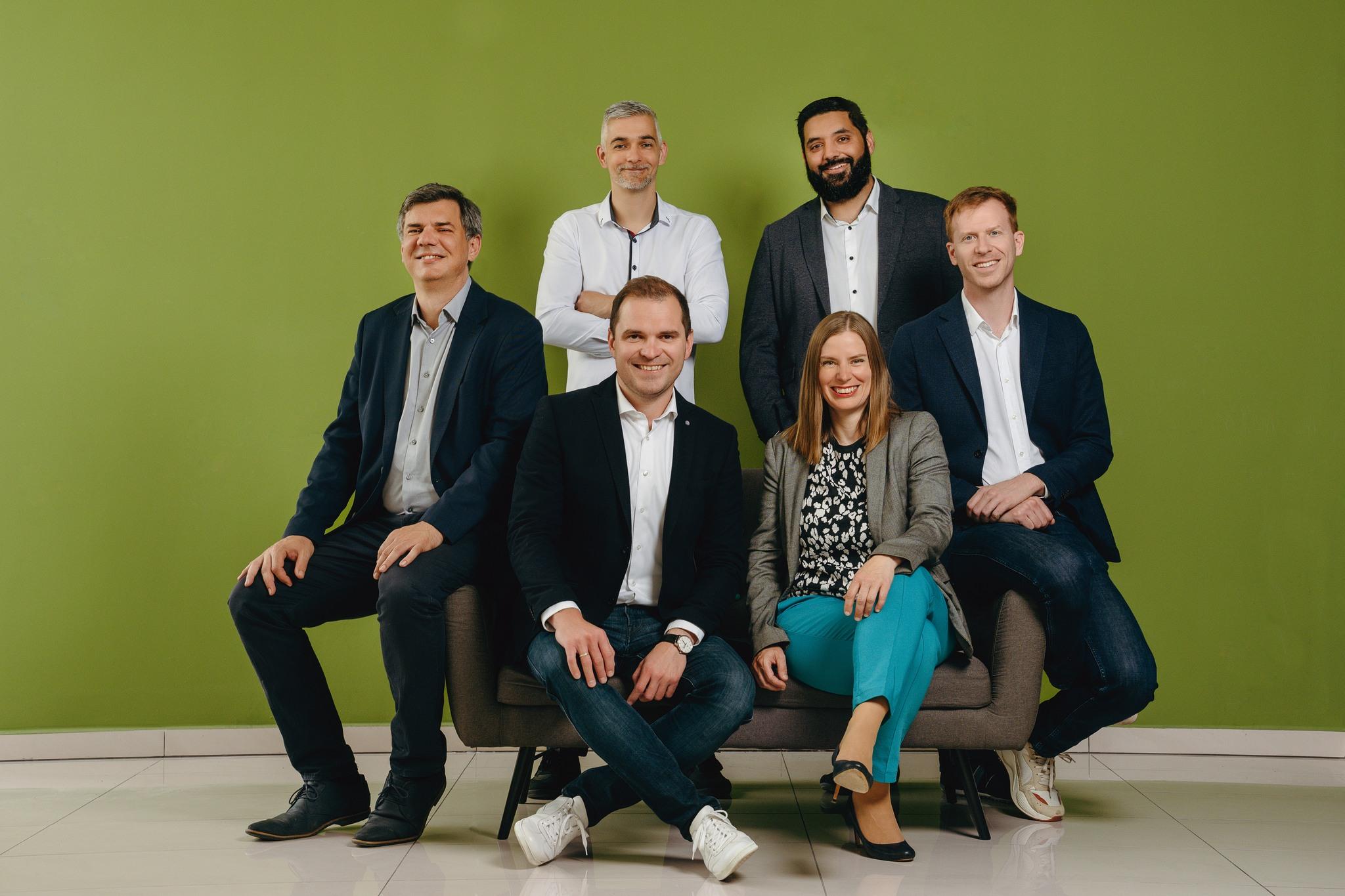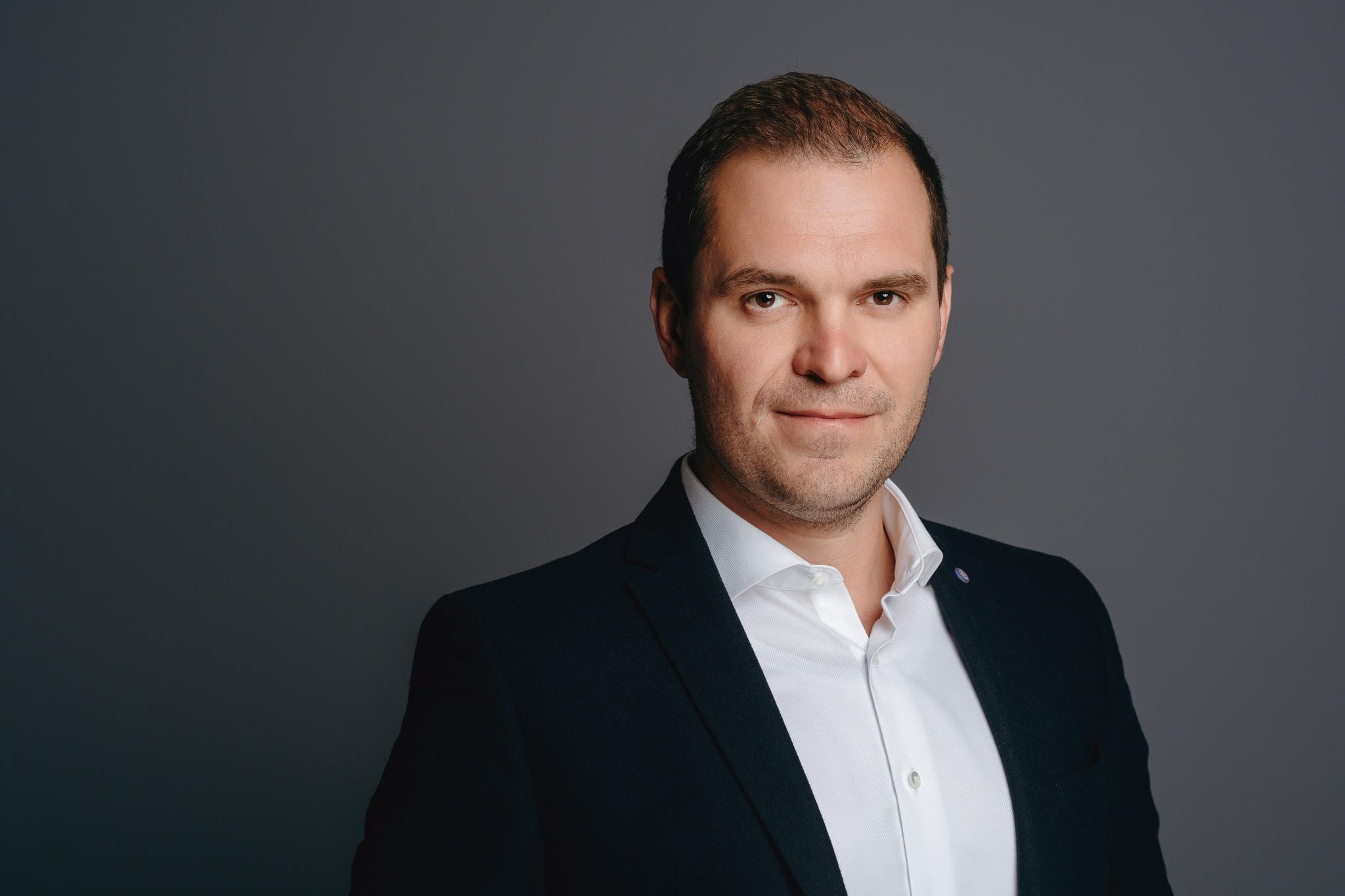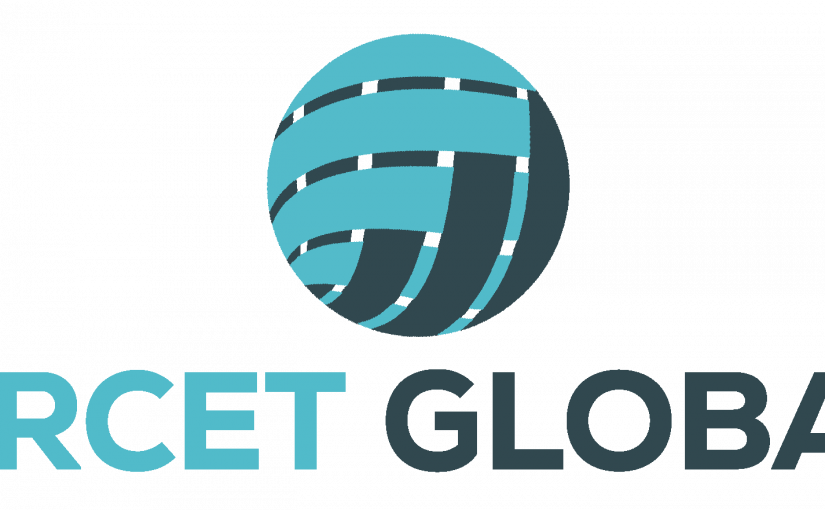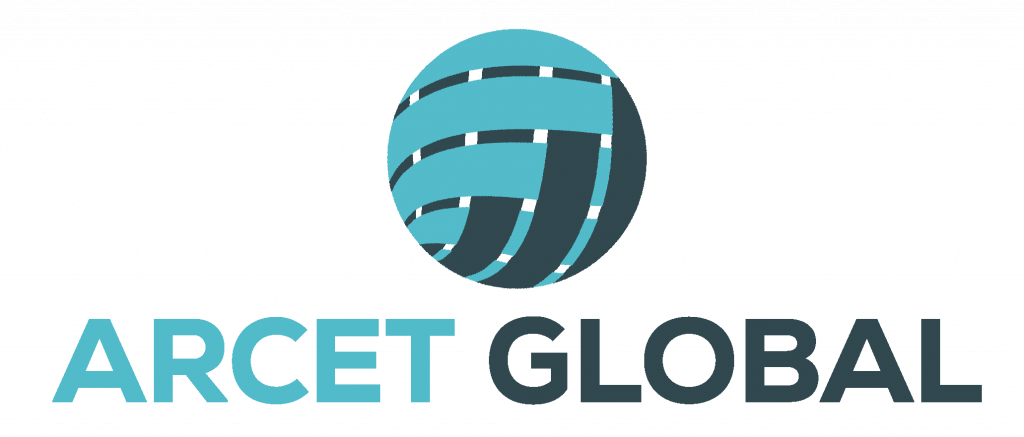
Attrecto: With a new leader and future studies education at the forefront of AI-driven innovation
Creating business value through new technologies, redefining and expanding software development – that’s the step Attrecto Next Tech Digital Solutions has taken by adding an educational business to its portfolio with the merger of Spark Institute, a company focused on corporate innovation and leadership development, and by hiring a new CEO in Imre Somogyi, a digitalization expert at McKinsey and large corporations. Attrecto prepares domestic and international market players for a new era of AI-driven business models that will radically transform business practices.
Attrecto’s choice to renew is directly linked to what the company’s experts classify as the ongoing second smart revolution, fueled by AI. The integration of artificial intelligence has surged into the business realm, prompting discussions around a notable paradigm shift rather than a mere technological advancement. “We used to say that it’s like 30 or 40 years ago, when computers and software became widespread: completely new perspectives were opened up, and we had to relearn and relearn how to run a business,” as highlighted by Gergely Kiss, one of the founders of Attrecto. “The first smart revolution notably unfolded with the proliferation of smartphones and smart devices. The recent surge in large language models, exemplified by tools like ChatGPT, mirrors this disruptive trend, reshaping the contemporary technological landscape. ChatGPT only needed 2 months to reach its first 100 million users, and today, 43% of university students globally and 80% of Fortune 500 companies use it,” adds Orsolya Galántai, the head of the Spark Institute.

Renewal and novelty are familiar concepts to Attrecto. The mission of Attrecto, founded by former SAP professionals 14 years ago, was always about creating value through the application of the latest technologies in business. Initially, this involved developing innovative smartphone solutions. As early as 2016, well before the global surge and popularization of the technology, they began exploring artificial intelligence applications, particularly in the development of chatbots.
What does the second smart revolution bring?
A prime example of the revolutionary changes AI brings in business processes is the process of requesting price quotes. On numerous websites, sellers do not list the prices of their products or services; instead, customers need to request quotes via email. This requires human capacity and hampers the customer experience by introducing waiting times. According to Kiss Gergely, “the key advantages of applying we can find in generative AI, is in improving the customer experience and offering personalized solutions”.
An AI-based application is capable of generating a customized quote tailored to individual customer needs—furthermore, it does so in seconds. Nevertheless, introducing such a service is not just about developing new software; involvement and understanding of AI technology’s benefits by colleagues are crucial. Without this, or if processes remain unchanged, the impact may be limited.
It is essential to articulate realistic expectations regarding AI. Currently, artificial intelligence primarily handles assistant tasks, excelling in generating reports, summaries, and proposals. While it does not yet grasp deep correlations or manage teams like a human assistant would, its capacity for skill development outpaces that of a human assistant. Consequently, it can swiftly advance within a corporate hierarchy, reaching “expert” levels such as in customer support or data processing.
Serving business innovation
The second smart revolution has also reshaped Attrecto’s business model. “We see that clients are intrigued yet uncertain about the business utility of AI technologies. They might not pinpoint their exact needs, but one thing is certain: they don’t want to fall behind,” says Somogyi Imre, the new CEO. “In response, we’ve reimagined our value proposition: providing end-to-end innovation solutions for companies looking to lead in digital technologies. We do this through tech-innovation-focused executive workshops, inspiring lectures, and structured advisory approaches. All of which significantly aid in executing well-calibrated and focused AI development projects.”
An AI project should be rooted in creating business value. As with any investment, return on investment is paramount. “Not every manager within a company is well-versed in the technological background; they are interested in business value and effectiveness. We must be able to explain how a digital solution assists them and what value it brings in monetary terms,” states Somogyi Imre.
Preparing to the future with education
A comprehensive service involves an innovative methodology-driven product development process, leadership programmes, and developing key skills crucial for the future—something that Spark Institute is dealing with.
In its new form under the name Spark by Attrecto, the institute trains leaders and experts in a transformative manner. “Our team consists of internationally renowned business professionals and thinkers, mainly preparing corporate decision-makers and employees to successfully respond to emerging trends at both capability and knowledge levels,” says Galántai Orsolya, the institute’s leader.
Spark by Attrecto’s programmes revolve around topics such as innovation culture, future organizations, new business models, strategic planning based on disruptive technologies, creative leadership with motivated diverse teams, and effective communication utilizing storytelling. “We delve into the technological aspect of innovation, allowing future-oriented professionals to learn about data-driven thinking, machine learning, and AI solutions. With Attrecto at the forefront, we can now do this with a dedicated tech expert team. It brings me great joy that in partnership with Zséger Ádám, we continue our collaborative work.”
The work of Spark is encapsulated well by a workshop known as Future Scenario Planning, where leaders strategize based on concrete case studies and the latest methods of futures studies for diverse future scenarios differing significantly from today’s environment—from biotechnology to large language models and Generation Z work practices.
Attrecto Next Tech Digital Solutions (Attrecto Zrt.)
Founded in 2010 in Győr by three former SAP professionals, the company specializes in developing mobile, web, and digital software solutions. Their clientele includes European and American companies, encompassing global brands like Audi, Telenor, HBO, PwC, EY, SAP, GE, AIG, Vodafone, Mercedes Benz, and Microsoft. They featured in the Financial Times list of the fastest-growing regional companies in 2016 (Technology Fast 500 EMEA). With over 70 employees, the company’s annual revenue was 1.5 billion forints in 2023. This year, they will open their first foreign office in Amsterdam.
Somogyi Imre
Bringing a robust advisory background, Somogyi Imre assumes the leadership role at the company. Over the past 15 years, he has primarily focused on enhancing corporate processes and digitization. He has worked at EY in Luxembourg, McKinsey in Budapest, and played a pivotal role in establishing the banking segment at the Hungarian PwC. He also has experience from the client side, having led the IT and operations areas at the EXIM Bank. Previously, he lectured at the Budapest Corvinus University and regularly shares his thoughts through presentations and forums.

Galántai Orsolya
Galántai Orsolya, co-founder, and CEO of Spark Institute, an international institute focusing on future skills, also serves as the Head of PR at Attrecto Zrt. and Vice President of the BWN – Business Women’s Network.
She believes that the path to solving the world’s pressing issues lies in innovative solutions, ensuring equal opportunities, and reshaping old, non-perfect rules.
With years spent in adult education and over a decade of experience in the creative sector, particularly in corporate communication, with a focus on IT and education, she brings valuable insights to companies that want to develop innovation. She has presented on sustainable innovation and complex problem-solving at events such as the London Digital Leaders conference, the Young Researchers Symposium at Óbuda University, the StartupGrid Tech4Good, and the ICT Global conferences.

Attrecto: Új vezetővel és jövőképző ágazattal az AI-vezérelt innováció élére
Üzleti értékteremtés új technológiák révén, újraértelmezve és kibővítve a szoftverfejlesztést – ezt a lépést tette meg az Attrecto Next Tech Digital Solutions azzal, hogy oktatási üzletággal bővítette portfólióját a vállalati innovációval és vezetőképzéssel foglalkozó Spark Institute beolvadásával, valamint új ügyvezetőt igazolt a McKinsey-nél és nagyvállalatoknál digitalizációval foglalkozó Somogyi Imre személyében. Az Attrecto a hazai és nemzetközi piac szereplőit – az üzleti modelleket gyökeresen felforgató – AI-vezérelt új korszakra készíti fel.
z Attrecto megújulásának oka egyértelműen az, amit a cég szakemberei úgy hívnak: a most zajló második okosforradalom, amelyet az AI fémjelez. A mesterséges intelligencia alkalmazása berobbant a cégek életébe is, olyannyira, hogy mára. nem pusztán technológiaváltásról, hanem teljes paradigmaváltásról beszélünk. „Azt szoktuk mondani, ez olyan, mint 30-40 évvel ezelőtt a számítógépek és a szoftverek elterjedése volt: teljesen új perspektívák nyíltak, újra kellett tanulni és tanítani a vállalati működést”, mondja Kiss Gergely, az Attrecto egyik alapítója. “Az első okosforradalom nyilvánvalóan az okostelefonok és okoseszközök megjelenése volt. A nagy nyelvi modellek (ilyen a ChatGPT) megjelenése és elterjedése éppen ekkora bummot jelent. Közismert, hogy a ChatGPT-nek mindössze 2 hónapra volt szükség az első 100 millió felhasználó eléréséhez, az talán kevésbé, hogy mára globálisan az egyetemi hallgatók 43%-a , és a Fortune 500 cégek 80%-a használja” – teszi hozzá Galántai Orsolya, a Spark Institute vezetője.

A megújulás és az újdonság nem áll távol az Attrecto-tól. A volt SAP-szakemberek által létrehozott Attrecto küldetése már 14 évvel ezelőtti alapításakor is az volt, hogy értéket teremtsen a legújabb technológiák üzleti alkalmazásával. Ez kezdetben az akkor még újszerűnek számító okostelefonos megoldások fejlesztését jelentette. A mesterséges intelligenciával pedig már 2016-ban, jóval a technológia globális megerősödése és divatos beszédtémává alakulása előtt foglalkozni kezdtek, többek között chatbotok fejlesztésének formájában.
Mit hoz a második okosforradalom?
Jó példa az AI által hozott forradalmi változásokra az üzleti folyamatok terén az árajánlatkérés. Számos honlapon láthatjuk, hogy az eladó nem tünteti fel termékei, szolgáltatásai árát, hanem emailben kell ajánlatot kérni tőlük. Ez emberi kapacitást igényel, ráadásul az ügyfélélményt sem segíti, hiszen várakozással jár. Márpedig Kiss Gergely szerint éppen az ügyfélélmény javítása, az egyénre szabott megoldások a generatív AI alkalmazásának legfőbb előnyei.
Egy AI alapú alkalmazás egy árajánlatot képes egyedi ügyféligényre szabottan összeállítani – ráadásul másodpercek alatt. Egy ilyen szolgáltatás bevezetése azonban nem csupán az új szoftver fejlesztéséből áll, hiszen hiába készül egy digitális megoldás, ha a kollégák nem lettek bevonva, nem ismerik az AI technológia kínálta előnyöket, vagy változatlanok maradnak a folyamatok. A hatás korlátozott lehet.
Érdemes realisztikus elvárásokat megfogalmazni az AI-jal kapcsolatban. A jelenben a mesterséges intelligencia tulajdonképpen asszisztensi feladatokat lát el: riportokat, összefoglalókat, ajánlatokat kiválóan képes előállítani. Mély összefüggéseket viszont még nem lát át, és csapatokat sem tud irányítani. Azonban képességeinek fejlesztése jóval gyorsabban halad, mint egy emberi asszisztensé, ezért hamarabb is “léphet előre” a vállalati hierarchiában. Gyorsan eléri a “szakértői” szintet, például az ügyféltámogatás vagy az adatfeldolgozás területén.
Az üzleti értékteremtés szolgálatában
A második okosforradalom megváltoztatta az Attrecto üzleti modelljét is. „Azt látjuk, hogy az ügyfelek érdeklődőek, de egyben bizonytalanok is az AI technológiák üzleti hasznával kapcsolatban. Nem tudják pontosan megmondani, mire van szükségük, de egy dologban biztosak: nem akarnak lemaradni”, mondja Somogyi Imre, a cég új ügyvezetője. „Erre válaszul gondoltuk újra értékajánlatunkat: end-to-end innovációs megoldást nyújtunk azoknak a vállalatoknak, akik élen akarnak járni a digitális technológiákban. Tesszük ezt tech-innováció fókuszú vezetői workshopokkal, inspirációs előadásokkal és strukturált tanácsadói megközelítéssel. Mindezek nagyban tudják segíteni, hogy józanul méretezett és megfelelően fókuszált AI fejlesztési projekteket valósítsunk meg”
Egy AI projektnek is az üzleti értékteremtés kell, hogy a kiindulópontja legyen. Mint bármilyen beruházásnál, itt is a megtérülés a legfontosabb. „A vállalat nem minden menedzsere van tisztában a technológiai háttérrel, őket az üzleti érték, az eredményesség érdekli. El kell tudnunk mondani, hogyan segít ebben és forintban kifejezve mit jelent egy-egy digitális megoldás”, mondja Somogyi Imre.
Oktatással készülni a jövőre
Egy komplex szolgáltatás része az innovatív módszertanokra épülő termékfejlesztési folyamat, a vezetői gondolkodás és a jövőben kulcsfontosságú képességek fejlesztése is – ebben segít a Spark Institute.
Az új formájában Spark by Attrecto névre hallgató intézet vezetőket és szakértőket képez transzformatív módon. „Nemzetközileg is elismert üzleti oldalról jövő szakemberekből, gondolkodókból álló csapatunk elsősorban a nagyvállalati döntéshozókat és munkatársakat készíti fel arra, hogy a feltörekvő trendekre sikeresen tudjanak reagálni képesség-, és tudásszinten is”, mondja Galántai Orsolya intézetvezető.
Programjaik olyan témák köré épülnek, mint az innovációs kultúra, a jövő szervezetei, új üzleti modellek, diszruptív technológiákra épülő stratégiai tervezés, kreatív vezetés motivált diverz csapatokkal, hatékony kommunikáció a storytelling eszközével. „Foglalkozunk az innováció technológiai oldalával, így az adatalapú gondolkodás, machine learning és AI megoldásokról is tanulhatnak nálunk a jövőjüket tudatosan építő szakemberek. Az Attrectóval az élen pedig most már dedikált tech szakértői csapattal tehetjük mindezt. Nagy öröm számomra, hogy Zséger Ádámmal partnerségben, közösen folytatjuk a közös munkát.”
A Spark munkáját jól jellemzi egy workshop, amely Future Scenario Planning (a jövőkutatás-alapú stratégiai tervezés) névre hallgat. Itt a vezetők konkrét esettanulmányokkal és a jövőkutatás legújabb módszereivel stratégiát terveznek a várható, mai környezettől igencsak eltérő jövőszcenáriókra. A biotechnológiától a nagy nyelvi modelleken át a Z-generációs munkavégzésig sok téma szóba kerül.
Attrecto Next Tech Digital Solutions (Attrecto Zrt.)
A győri székhelyű vállalatot három volt SAP-szakember alapította 2010-ben, mobil, webes és digitális szoftvermegoldások fejlesztésére. Ügyfeleik között európai és amerikai cégek szerepelnek, többek között olyan világmárkák, mint az Audi, a Telenor, az HBO, a PwC, az EY, az SAP, a GE, az AIG, a Vodafone, a Mercedes Benz vagy a Microsoft. 2016-ban szerepeltek a Financial Times leggyorsabban növekvő régiós cégeinek listáján (Technology Fast 500 EMEA). A cég 70+ munkatársat foglalkoztat, éves bevétele 2023-ban 1,5 milliárd forint volt. Az idén nyitják meg első külföldi irodájukat, Amszterdamban.
Somogyi Imre
Somogyi Imre erős tanácsadói háttérrel érkezik a cég élére. Elsősorban vállalati folyamatok fejlesztésével és digitalizálásával foglalkozott az elmúlt 15 évben. Dolgozott az EY luxemburgi és a McKinsey budapesti irodájában, majd a magyar PwC pénzintézeti üzletágát építette fel. Ült az ügyféloldalon is: az EXIM Bank IT és működési területét vezette. Korábban tanított a Budapesti Corvinus Egyetemen, rendszeresen osztja meg gondolatait előadásokon, fórumokon.

Galántai Orsolya
Galántai Orsolya, a jövő képességeivel foglalkozó nemzetközi intézet, a Spark Institute társalapítója, vezetője, az Attecto Zrt. PR vezetője, a BWN – Business Women’s Network alelnöke.
Hisz abban, hogy az újszerű megoldásokon, az esélyegyenlőség biztosításán, és a régi szabályok újrarajzolásán át vezet az út a világ égető problémáinak megoldásához.
A felnőttoktatásban eltöltött évei mellett 10+ éves kreatív szektorban szerzett tapasztalattal rendelkezik vállalati kommunikáció, kiemelten IT és oktatási szektorban.
Fenntartható innovációról és komplex probléma-megoldásról adott elő többek között a londoni Digital Leaders konferencián, az Óbudai Egyetem fiatal kutatók szimpóziumán, a SturtupGrid Tech4Good, és az ICT Global eseményén.














